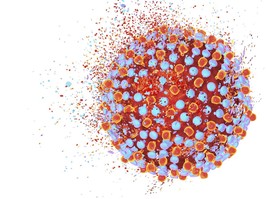grant helps expand women's hepatitis c treatment program
by: julie kotsis many of the women helen lathouris help...

outreach worker helen lathouris, from left to right, clinical pharmacist mary ann hornick and mia biondi, a community nurse practitioner, at the house of sophrosyne on sunday, july 25, 2021, where they work on the windsor hepatitis project caring for women in drug treatment.
julie kotsis
/
windsor star
by: julie kotsismany of the women helen lathouris helps through her job as an outreach worker look to her as a role model – someone who is succeeding despite earlier challenges with drug addition and trauma.and lathouris is using that connection to inspire and assist women exposed to hepatitis c navigate through the caring for women in drug treatment program, which is the result of a partnership between ontario specialty nurses of toronto and windsor’s house of sophrosyne.thanks to a recent $50,000 connect-c grant lathouris, 45, can focus her work on both in-person and virtual connections that reach women across ontario who are receiving drug treatment.“since i have lived experience, i can relate to a lot of the clients here (at the house of sophrosyne) so they feel more comfortable and trust me,” lathouris said.and while she doesn’t have hepatitis c, lathouris does have experience with intravenous drug use and trauma and she previously completed the 35-day residential program.“i let them know … that i’ve been here myself and it’s a great program. and you know, how it changed my life,” she said. “and so then i feel like they feel more comfortable with me.”the goal of the hepatitis c work is to find out if women have the illness and make it easy for them to be treated.hepatitis c is a viral infection that causes liver inflammation, sometimes leading to serious liver damage. the virus spreads through contaminated blood.nurse practitioner mia biondi said treatment for hepatitis c is much simpler than it used to be but it can’t work if women don’t access it.biondi said only about a quarter of treatment programs in ontario are dedicated to women but data shows women are more likely to exchange sexual services for being injected by another individual, and have multiple sexual and injection partners, resulting in little control over where drugs were acquired, how they were prepared, and whether harm reduction was used.the windsor-based treatment focuses solely on women. priority is given to pregnant women and those who are trafficked “because their safety is so at risk and their safety is directly tied to their addiction because the trafficker supplies them with drugs.”and with preliminary data from the residential program showing a positivity rate for hep c of about 13 per cent and an active infection rate of eight per cent – compared to about one per cent for the general population – there is much need for treatment.following an eight-month trial, pre-covid-19, 100 per cent of the women who participated completed treatment, biondi said.clinical pharmacist mary ann hornick has front-line clinical responsibility in conjunction with lathouris.hornick provides information on hep c and offers confidential testing. women don’t have to seek out services themselves.“if they have active hep c, further blood work and assessment is done at the house of sophrosyne,” hornick said. “we get the treatment in their hands always by the time they leave their five-week program here.“it allows them to be treated without having to leave the site. it just really accommodates them.”biondi said the results speak for themselves.“this is really a demonstration project of how effective this (is), with the angle that we are not doing enough to support women,” biondi said. “men who use drugs have always had a higher positivity rate (for hep c) than women except now we’re seeing that women born after 1975 … they actually have higher rates than men.“we do have to fund other clinical roles. that has come from the community loud and clear – you have to have walked some of these paths in order to support people who you’re trying to get to walk these paths.“i think we’re really excited and enthusiastic that it will be successful.”jkotsis@postmedia.comtwitter.com/kotsisstar
 3 minute read
3 minute read





